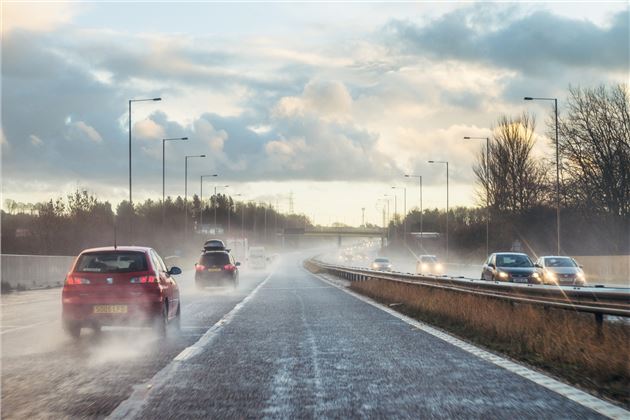How to drive safely in heavy rain
Driving in the wet requires extra concentration and torrential downpours can make roads treacherous. So with the aid of the IAM, here's our guide to staying safe.

How to drive safely in wet weather
Much of the following may seem obvious to many, but it always pays to err on the side of caution when driving in heavy rain. According to Government figures, people are 30 times more likely to be killed or seriously injured on the roads in rain than in snow.
First off, see and be seen. Put your lights on – as a rule of thumb, whenever you need to use your wipers you should also turn your headlights on. Yes many cars now have automatic headlights, but often they will not come on in adverse weather conditions - ensure they are on so you’re visible to other road users.
Before you set off, set your heater controls – rain can make windows mist up in seconds. You don’t want to be fiddling with heating, ventilation and air conditioning controls when you should be concentrating on the road.
Slow down. In the rain your stopping distance should be at least doubled. Giving yourself more space helps you to avoid spray, especially when following a large vehicle. Rule 126 of the Highway Code states that the braking distance between yourself and another car on a dry road surface should be at least two seconds, and at least four seconds when driving in the rain
Keep your eyes on the road ahead and plan your driving so that you can brake, accelerate and steer smoothly – harsh manoeuvres will unbalance the car.
Strong winds can also unsettle your car and even change your direction of travel. Grip your steering wheel firmly and be aware of the effects of the elements on other road users, particularly motorcyclists and flat-sided vehicles.
If you have cruise control, avoid using it on wet roads – it may create problems if you start to aquaplane.
Floods and deep water
If there are floods you need to consider other routes to keep you safe. If the water is standing more than six inches deep, avoid driving through it. You can judge the depth in relation to the kerb
If there are similar vehicles driving safely through, then you can make a judgement call on whether it’s safe to do so yourself.
If the water is fast flowing, do not attempt to drive through it. There is a real danger of your car being swept away
If you have decided to drive through a flood take the following precautions. Go slowly and take it easy.
Press lightly on the clutch and add gentle pressure to the accelerator to increase engine revs but do so without speed. Do this in a similar way to how you do hill starts, this will prevent water from entering your exhaust. If you’re in an automatic, accelerate lightly but control the speed with your brakes
If you have any doubt, turn back. Many modern cars have an air intake in the wheel arch and could be below water level if going through a flood. If your engine takes in any water, it will immediately hydro lock and the engine will stop
Remember to stay alert and avoid splashing pedestrians. If this is done accidentally you can still receive a fixed penalty and three points on your licence for driving without due care and attention. If done deliberately it could be a public order offence, a court appearance, or a fine

Is your car aquaplaning? Here's what to do...
Aquaplaning is a very unnerving and scary experience. And it can often occur when surface water doesn't seem that deep. In fact, standing water as shallow as 2.5mm can cause an aquaplaning effect
The signs to look out for are: Your engine may become louder if the driving wheels have lost grip. It will feel as though you’ve dropped down in the gears causing revs to increase. The steering may become lighter and unresponsive.
If you experience any of this, try not to panic. Instead, ease off the accelerator or cancel the cruise control. Hold the steering wheel straight and firm. Importantly, do NOT hit your brakes hard.
When your car gains traction you can slowly begin to use the brake and slow down.
How to avoid aquaplaning
If it’s been raining and you’re about to drive, there are things that you can do to help prevent your car from aquaplaning.
Check your tyres – they can have a massive impact on how your car will handle in the wet.
Reduce your speed. Problems occur when the tyres can no longer clear the standing water as they rotate. Going slower will allow time for the tread to do its job
Be alert for flood warnings on the road and if you can see any water in the distance, be sure to slow down and prepare to go around it
If you have it, avoid using cruise control in extreme conditions.
Check your tyres
You can have the superhuman reactions and the best brakes money can buy, but the one thing that keeps your car in contact with the road is your tyres. Checking the tread depth and pressures is vital - you should do it once a fortnight or at the very least, every month.
Our advice for tyres is to buy the best you can afford. Don't skimp on quality - tyres are so vital when it comes to safety. When it comes to fitting the right tyres, make sure you choose versions of those that are recommended in your service book. Fitting incorrect tyres can have an adverse effect on your car's handling.






.jpg)





